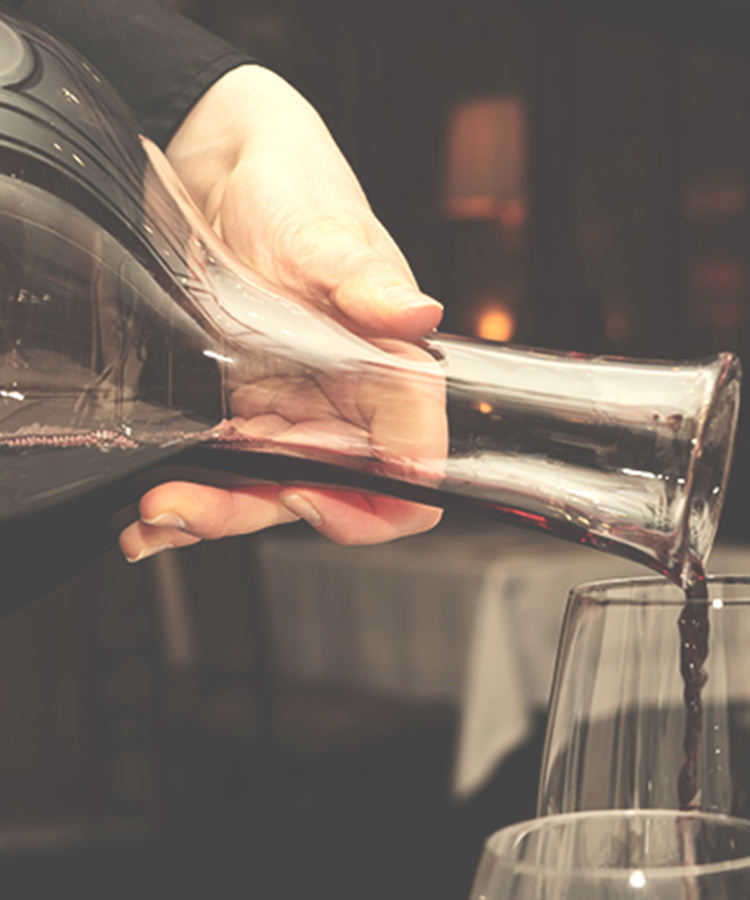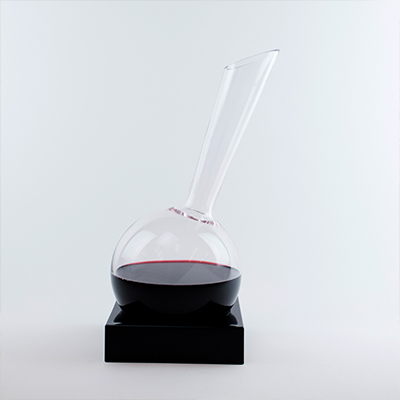For some strange reason, many wine drinkers completely freak out at the idea of decanting wine. It’s not even the actual decanting that freaks people out; it’s the question of when to decant wine that causes everyone to go a little crazy. But knowing when to decant wine is actually pretty simple. Just stick to this golden rule: You want to decant wines that are red, old, and bold.
To be fair, there really aren’t any wines that worsen with decanting. We decant wines for the purpose of removing wine from sediment or for the introduction of oxygen, which opens a wine’s aromas and flavor profile. However, too much oxygen will begin to negatively affect your wine. Ever leave a glass of vino on the counter only to return six hours later to a beverage that tastes like vinegar? That’s oxidation 101, which has the same result as “over decanting.” When it comes to decanting wine, usually 30 minutes to one hour will do just fine.
Both old and bold wines will benefit from decanting, though for extremely different reasons. The reason for decanting old wine is to remove the juice from the sediment created over time. Aged reds have sediment due to the bonding of phenols and tannins over time, starting with as little as five years of age. To decant an aged red, stand the bottle straight up a day before consumption, letting the sediment fall to the bottom. Pour wine slowly from the neck of the bottle into the decanter, stopping when you notice sediment or cloudiness reaching the neck. BEWARE: Aromas and flavors in aged wine are extremely delicate, so the presence of oxygen will cause these wines to deteriorate faster. With older wines, once the juice is removed from the sediment, the decanting process is over and the wine is ready to be consumed. Do not leave the wine out to “breathe,” as this will significantly quicken the wine’s already ticking time clock.
For bold reds, the purpose of decanting is to introduce oxygen to the wine. When wine comes in contact with oxygen, aromas and flavors become stronger, making it easier to assess (and enjoy!) the glass in front of you. In addition, the reaction between oxygen and wine will also cause tannins to soften up, making an aggressive wine much more palatable after an hour or so with air. Decanting is recommended for most young reds, especially bold varieties, including Cabernet Sauvignon, Syrah, and Nebbiolo.
Here are three of our favorite decanters.
Vinocchio Decanter
For all of your fancy aged reds, check out this mouth-blown, crystalline glass Vinocchio Decanter. The non-drip spout and black acrylic base make this sleek Italian glassware a chic addition to any at-home bar.
Geometric Crystal Decanter
For those who prefer a more unique style of glassware, check out this Geometric Crystal Decanter. Made from lead-free crystal on a star-shaped base, this funky statement piece is perfect for the eclectic at-home bar.
Dual Purpose Wine/Spirits Decanter
And for lovers of both whiskey and wine, look no further than this dual purpose decanter, perfect for any booze decanting need that may come your way. Stands at 11.5 inches tall and includes glass stopper.



